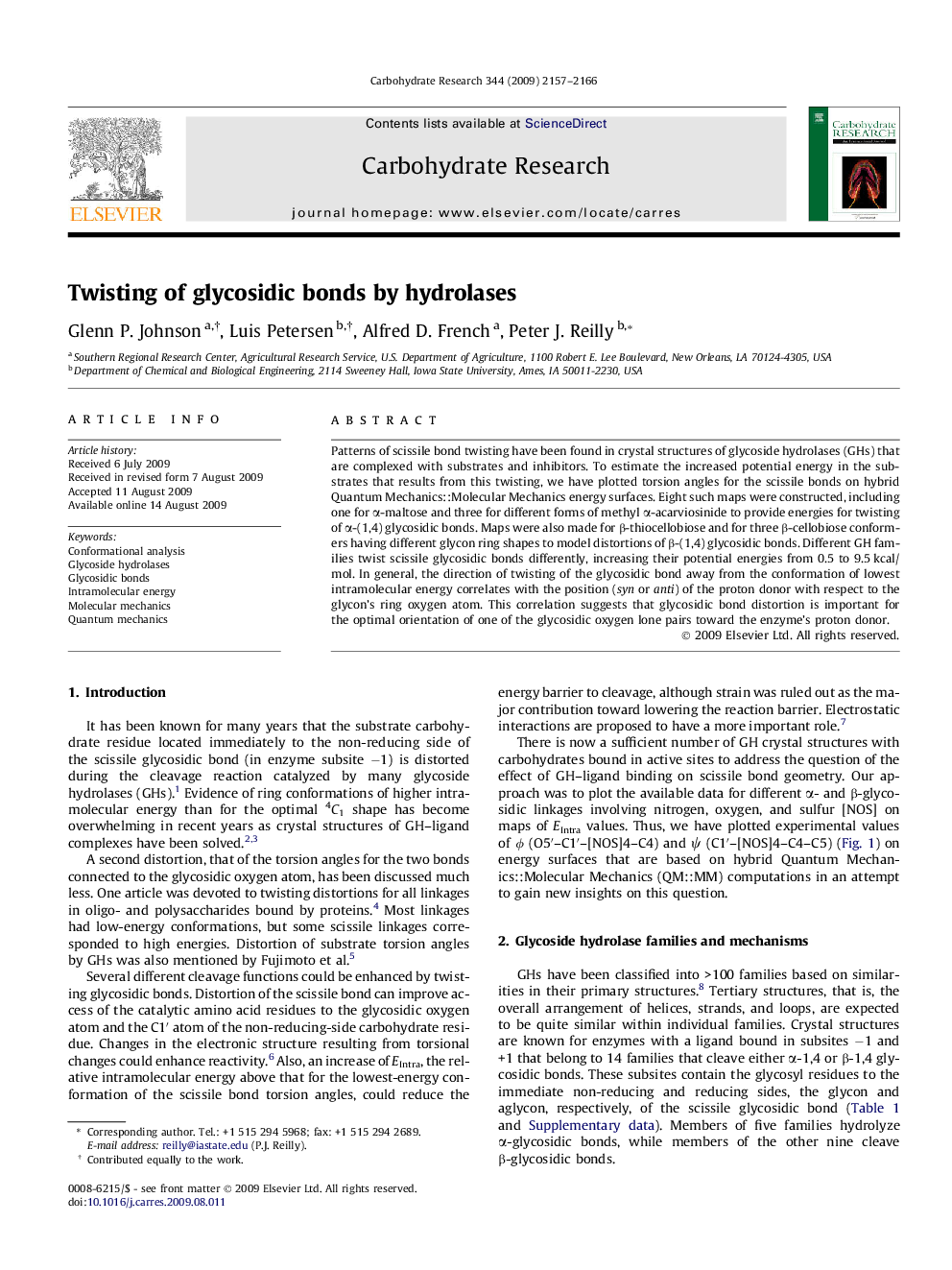| Article ID | Journal | Published Year | Pages | File Type |
|---|---|---|---|---|
| 1390696 | Carbohydrate Research | 2009 | 10 Pages |
Patterns of scissile bond twisting have been found in crystal structures of glycoside hydrolases (GHs) that are complexed with substrates and inhibitors. To estimate the increased potential energy in the substrates that results from this twisting, we have plotted torsion angles for the scissile bonds on hybrid Quantum Mechanics::Molecular Mechanics energy surfaces. Eight such maps were constructed, including one for α-maltose and three for different forms of methyl α-acarviosinide to provide energies for twisting of α-(1,4) glycosidic bonds. Maps were also made for β-thiocellobiose and for three β-cellobiose conformers having different glycon ring shapes to model distortions of β-(1,4) glycosidic bonds. Different GH families twist scissile glycosidic bonds differently, increasing their potential energies from 0.5 to 9.5 kcal/mol. In general, the direction of twisting of the glycosidic bond away from the conformation of lowest intramolecular energy correlates with the position (syn or anti) of the proton donor with respect to the glycon’s ring oxygen atom. This correlation suggests that glycosidic bond distortion is important for the optimal orientation of one of the glycosidic oxygen lone pairs toward the enzyme’s proton donor.
Graphical abstractFigure optionsDownload full-size imageDownload as PowerPoint slide
